Ambrosia deltoidea, Triangle-leaf Bursage
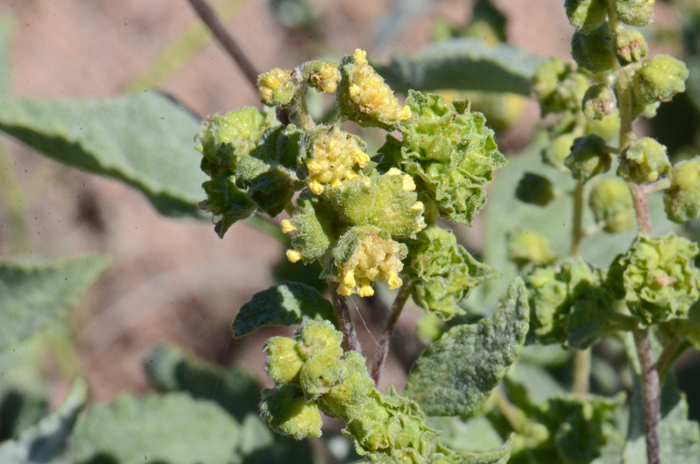
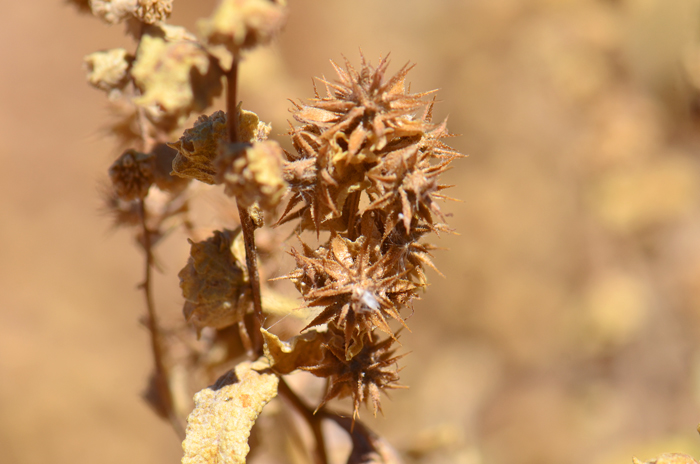
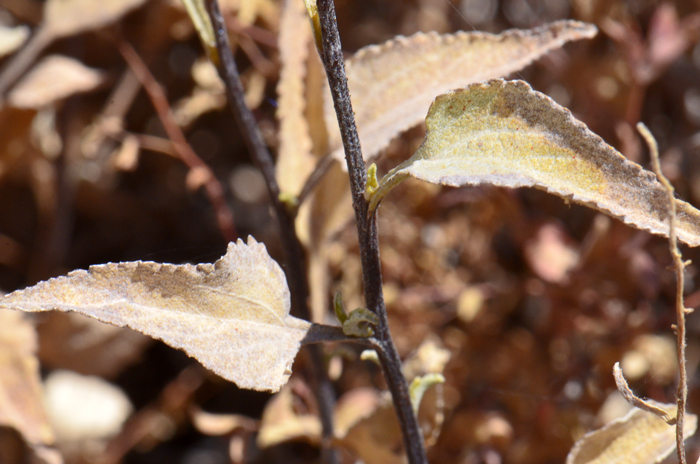
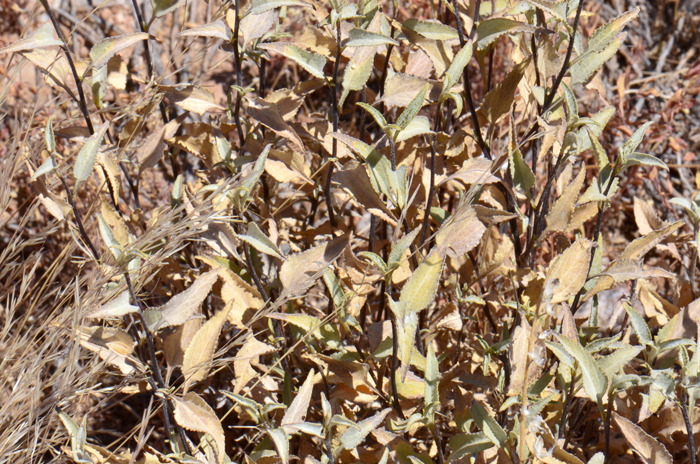
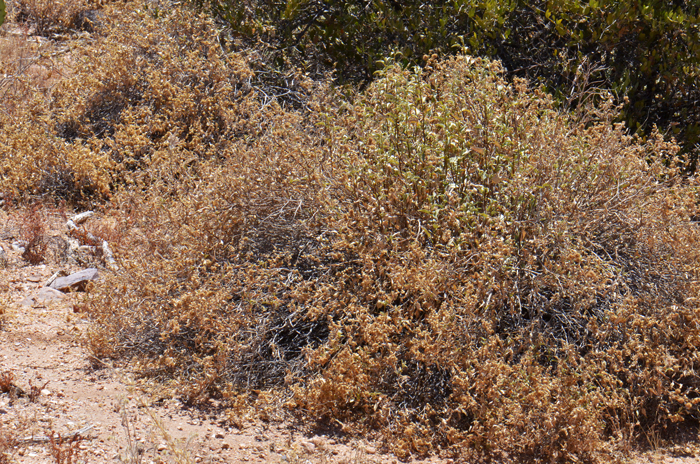
Scientific Name: Ambrosia deltoidea
Common Name: Triangle-leaf Bursage
Also Called: Burrobush, Burro-weed, Bursage, Bur Sage, Rabbitbush, Triangle Bur Ragweed, Triangle Bursage; (Spanish: Chicurilla, Ambrosia, Estafiate, Chamizo Forrajero).
Family: Asteraceae, Sunflower Family
Synonyms: (Franseria deltoidea)
Status: Native
Duration: Perennial.
Size: 1½ to 2 feet or more (45-60 cm).
Growth Form: Subshrubs; stems erect; plants compact and somewhat rounded, densely branched with slender brittle branches, spinescent; new stems have very small whitish hairs (tomentose) and are resinous; plants sticky from the resin; plants are reddish-brown, older branches grayish, dried or dead throughout.
Leaves: Greenish-gray above, grayish-white below; leaves numerous; alternate along stem; blades triangular with short supporting stalks (petioles); new leaves have very small whitish hairs (tomentose) and are resinous; older leaves are hairless (glabrous); the leaf edges or margins are finely toothed and the leaves are drought-deciduous in extreme heat.
Flower Color: Greenish-yellow; dull, inconspicuous, flowers borne on terminal racemes or panicles (inflorescence); the male or pistillate heads are clustered (2 to 3 florets) on the inflorescence; the female or staminate heads (12 to 30 florets) are crowded on peduncles close to (proximal) the male florets, the female heads are also borne on lateral branches; the fruit is a rounded (globose) spiny fusiform bur and the seed is an achene; seed dispersal strategy is attachment to animals.
Flowering Season: April or May to November or December
Elevation: 1,000 to 3,000 feet (300-900 m)
Habitat Preferences: Very common on rocky hillsides, dry plains, mesas and sandy washes on alluvial fans. This species is often seen in pure stands.
Recorded Range: In the United States, Triangle-leaf Bursage is relatively rare where it is found only in Arizona. It is also native to Baja California and northwestern Mexico. In Arizona it grows in the central, southern and southwest parts of the state.
North America & US County Distribution Map for Ambrosia deltoidea.
North America species range map for Ambrosia deltoidea:
North American range map courtesy of Virginia Tech, Dept. of Forest Resources & Environmental Conservation
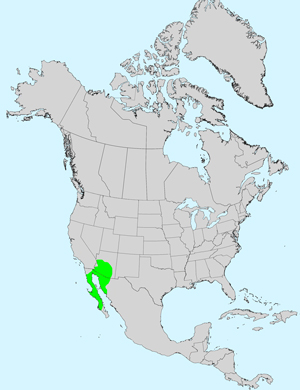
U.S. Weed Information: Unknown
Invasive/Noxious Weed Information: Unknown
Wetland Indicator: Unknown
Threatened/Endangered Information: Unknown
The genus Ambrosia was published by Carl Linnaeus in 1753.
In the Southwestern United States: Arizona has 15 species of genus, California has 14 species, Nevada and New Mexico each have 8 species, Texas and Utah each have 10 species. Data includes Hymenoclea. All data approximate and subject to revision.
Comments: Triangle-leaf Bursage is one of the most common plants in the lower Sonoran desert scrub plant communities. It is a dominate or co-dominant plant in desert scrub communities especially with Creosote Bush, Palo Verde, Mesquite or alone in a single stand.
The type species species was collected by John Charles Fremont on the Gila River, Arizona.
Triangle leaf Bursage is often used as a nurse plant by the Saguaro cactus. It is reported to have little or no value to livestock and normally lives about 50 years.
As is the case for many members of this genus, pollen from the male flowers of Triangle-leaf Bursage causes hay fever in many people.
For a comprehensive and thoroughly documented review of Triangle Leaf Bursage, Ambrosia deltoidea see the USDA USFS Fire Effects Information System, or FEIS.
Also see in Southwest Desert Flora Canyon Ragweed, Ambrosia ambrosioides, White Bursage, Ambrosia dumosa, Hollyleaf Bursage, Ambrosia eriocentra, Burrobush, Ambrosia monogyra and Cheesebush, Ambrosia salsola.
The species epithet "deltoidea" (deltoid'ea/delto'ides:) triangular, like the fourth letter of the Greek alphabet, delta (Δ).

